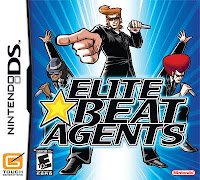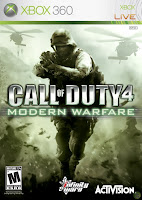91.
Castlevania: Harmony of DissonanceThe best way to understand
Harmony of Dissonance is as a stepping stone between the first GBA
Castlevania game
Circle of the Moon and the masterwork
Aria of Sorrow, the final GBA
Castlevania adventure. Set in 1748,
Harmony of Dissonance tells the story of Juste Belmont and the eternal nemesis of the Belmont clan, Dracula. Although most
Castlevania games recycle the same storyline,
Harmony of Dissonance features two of Juste’s childhood friends who are wrapped up in the darkness of Dracula’s shadow, adding an emotional and nostalgic element not always see in other
Castlevania games. Juste primarily uses his whip to dispatch enemies, but players can enhance his sub-weapons with hidden spell books which increase their power and drain magic energy.
92.
Super Dodge BallThe odds that a video game about competitive dodge ball would end up being one of the best experiences the NES has to offer are very slim, but Technos’
Super Dodge Ball is an insanely fun (albeit short) sports game based on the rules of gym class’ cruelest game. In
Super Dodge Ball, players take control of the six-man USA team in an international tournament against rival countries: India, England, China, the USSR, Kenya and Japan. The controls in
Super Dodgeball are simple, but a good strategy goes a long way in the tournament. Each member of the six-man team has a unique set of statistics based on energy, throwing power, technique, agility, etc.
Super Dodgeball is a very short game, but loads of fun while it lasts.
93.
KillzoneAlthough it’s not the “
Halo-killer” some had anticipated,
Killzone is an excellent game with an engaging storyline, some great combat and an unmatched visual style.
Killzone is set in the future, when humanity is colonizing outer space, and a vicious war has erupted between Earth loyalists and mutated separatists. The game unfolds across several environments on Earth colony Vekta: urban slums, steamy swamps, snowy mountain summits, etc. All have been drawn masterfully by the designers at Guerrilla Games, who have built in
Killzone a bleak vision of humanity’s future, painted with gritty grays. Aside from its one-player campaign (in which players can control four different soldiers),
Killzone features offline and online multiplayer matches.
94.
Astro Boy: Omega FactorAmerican audiences probably won’t be able to make much sense of
Astro Boy: Omega Factor’s cryptic plot, unique characters and strange dialogue, but its visual style, level design and gameplay diversity make it one of the best action games on the GBA.
Astro Boy was designed by Treasure, the development team behind some excellent shooters like
Ikaruga and
Gunstar Heroes, and some of Treasure’s trademarks can be seen in
Astro Boy: waves and waves of enemies, boss fights aplenty and explosive action filling every corner of the screen. The story is based on several Japanese sources, including
Astro Boy comics and cartoons, and thus includes characters from the entire
Astro Boy universe. With each character Astro Boy encounters, players can power up one of his abilities.
95.
Donkey Kong Country 2: Diddy’s Kong QuestThe first
Donkey Kong Country was a huge step forward in graphical presentation, being one of the first mainstream games to feature expensive pre-rendered 3D graphics. Its sequel, however, surpasses it not only in terms of appearance but is also more challenging and a deeper, more rewarding experience.
Diddy’s Kong Quest begins after Donkey Kong has been captured by Kaptain K. Rool. It’s up to Diddy Kong (Donkey’s nephew and sidekick from the first
Donkey Kong Country) and his girlfriend and newcomer to the series Dixie Kong to save him. Although its features gameplay which is essentially similar to its predecessor,
Diddy’s Kong Quest has many more diverse levels, more challenging enemies, tons of secret collectable items and several more animal sidekicks.
96.
Star Wars: Rogue SquadronN64 owners who were
Star Wars fans had a lot to celebrate:
Shadows of the Empire,
Episode 1: Racer and, of course, the arcade-style shooter
Rogue Squadron which allowed players to control Luke Skywalker in several missions against the evil forces of the Galactic Empire. Unlike some of the
Star Wars computer flight simulations,
Rogue Squadron is more forgiving in terms of real-world flight mechanics and physics. The missions in
Rogue Squadron consist of four main types, search and destroy, reconnaissance, rescue, and protect, each requiring a particular starship to complete a given mission. The replay value in the game is extremely high; players can revisit each mission several times in order to earn one of three medals, rise in rank and unlock hidden missions and starships.
97.
CastlevaniaThe
Castlevania franchise has since spread to non-Nintendo platforms, but for the first few years of its existence it belonged to the NES. Three
Castlevania games were produced for the NES between 1987 and 1990 and although many critics point to
Castlevania III as the high water mark, it’s the original
Castlevania game which stands atop the rest. In
Castlevania, loosely inspired by Bram Stoker's
Dracula, players take control of vampire-hunter Simon Belmont, armed with a whip and his wits as he takes on the forces of darkness: ghosts, mummies, skeleton warriors, etc.
Castlevania lasts only six levels, but its famous level of difficulty will make a straight run almost impossible. A haunting soundtrack enhances what is already one of the most atmospheric titles for the NES.
98.
The Legend of Zelda: Phantom HourglassDevelopers at Nintendo seem to use a time-tested formula when producing new
Zelda games: keep intact the essential core and add to it some small or large innovations which result in a unique experience. The first DS Zelda game,
Phantom Hourglass, is a child of that formula, an excellent
Zelda adventure with all the possibilities that the DS hardware provides: players control Link and attack enemies exclusively with the stylus. Set some time after
The Wind Waker,
Phantom Hourglass reunites Link and friendly pirate Tetra in a new quest against a powerful dark force. The game features much of the island-hopping found in
The Wind Waker, but Link now braves the ocean in the S.S. Linebeck, a paddle steamer which is fully customizable.
99.
Tak and the Power of JujuSome gamers might immediately dismiss
Tak and the Power of Juju because of its Nickelodeon affiliation or due to its cutesy graphics but those who do are missing out on an outstanding platform game with a terrific sense of humor and some gorgeous visuals. Players control Tak, a scrawny good-natured kid who must save his tribe from an evil sorcerer. Tak can travel to several game environments via flying machines or warp gates, where he must defeat enemies, collect items and solve brain-teasing puzzles. In many ways,
Tak and the Power of Juju is no different from every platformer on the market today, but its visual style, hilarious jokes and colorful characters allow it to stand out.
Tak also features snowboarding and “sandboarding” levels which are ridiculously fun.
100.
BraidThere can be no doubt that the video game industry is dominated by the biggest companies with the most profitable franchises; so when an independent software developer produces a popular and critically-acclaimed game it’s impossible not to take notice.
Braid is the brainchild of designer Jonathan Blow, a man who has been critical of several trends inside the industry and has called for new games using “innovative, ethical and personal art.” In
Braid Blow has created a game which is peerless in its presentation and its time-bending gameplay. At its most superficial level
Braid is a puzzle/platform game about a young man hoping to rescue a princess from a monster, but as players tread deeper into the game, the cryptic and metaphorical story allows many interpretations.
 Game: Elite Beat Agents
Game: Elite Beat Agents


